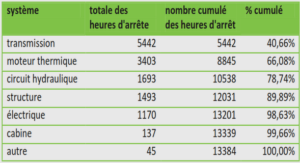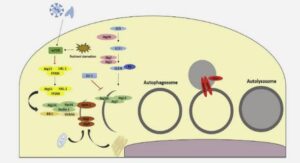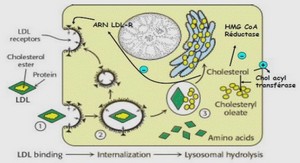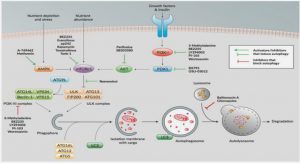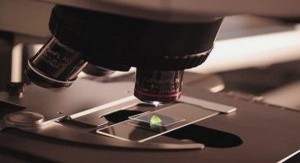L’Unité de coordination clinique des services préhospitaliers d’urgence
Approximately 20% of the Canadian population lives in rural areas. Members of the rural population are older and in poorer health than are urban citizens1 , but the former have reduced access to specialized care, advanced imaging, intensive care units (ICUs), and trauma centers 2 . Many community health centers do not have local 24/7 access to a physician, and are operated solely by nurses during some shifts. Further, the rural population relies on Emergency Medical Services (EMS), which are limited by long travel distances and few vehicles in service3, 4. Such reduced hospital and prehospital services pose a threat to rural health care. The Chaudiere-Appalaches region of Quebec is primarily rural. The population of 418,704 is sparsely distributed across a vast area of 15,073 km2 . A telemedicine program was implemented at the Alphonse-Desjardins Community Health and Social Services Center (a university-affiliated hospital) to improve emergency health care for Chaudiere-Appalaches citizens. The Unité de Coordination Clinique des Services Préhospitaliers d’Urgence (UCCSPU) [Emergency Prehospital Services Clinical Coordination Unit] provides online medical support to emergency medical technicians (EMTs) and nurses in the Chaudiere-Appalaches and Quebec City regions (See Figure 1). A nurse and an emergency physician are available 24/7. The specially trained nurses work in a designated telehealth room. The unit improves access to quality health care and optimizes resources in two ways. First, EMTs and nurses from community health centers learn interventions that are typically beyond their expertise. Second, the use of the UCCSPU decreases the use of health care resources. The following sections describe the UCCSPU program.
Description of UCCSPU program and preliminary analyses
In the province of Quebec, EMS are primarily provided by Basic Life Support (BLS) paramedics. BLS paramedics are authorized to perform cardiopulmonary resuscitation, bag-valve-mask ventilation, semiautomatic defibrillation, and tracheal intubation, and to administer five medications: aspirin, nitroglycerin, salbutamol, epinephrine, and glucagon. They are not authorized to use venous access. With the help of UCCSPU, BLS from the Chaudiere-Appalaches and Quebec City regions were authorized to extend beyond their usual protocols and administer additional doses of the medications listed above. They received advice and guidance from UCCSPU nurses as needed. Four remote interventions were developed between 2006 and 2011, with the objective of supporting BLS paramedics and providing online support to rural nurses. These health care practitioners received theoretical and practical training (three days for paramedics and two weeks for nurses) to perform the interventions that were beyond their scope of professional training. For each episode of care provided with the help of UCCSPU, a nurse collected the data on selected variables relevant to each of the four remote services 11 and stored them in a database. The preliminary analyses presented in this paper were performed on data extracted from this database. The four UCCSPU interventions were implemented one after another once their clinical validity was confirmed. Therefore, they were not planned a priori, but rather developed as the unexpected possibilities were discovered over time. Prehospital STEMI diagnosis The prehospital diagnosis of ST segment elevation myocardial infarctions (STEMIs) patients was the main creative idea and clinical justification behind the UCCSPU implementation and was thus the first intervention to be fully operated. The first objective of this clinical platform was to improve access to percutaneous coronary intervention (PCI) in a rural population sparsely distributed across a vast area. UCCSPU staff members have been using prehospital ECGs to remotely diagnose STEMIs since July 2006. The procedure is as follows: the UCCSPU nurse activates the catheterization laboratory, and the ambulance bypasses the nearest ED if the primary percutaneous coronary intervention (PCI) can be performed within 90 minutes from first medical contact (American Heart Association/American College of Cardiology- AHA/ACA)5 . If PCI cannot be performed within 90 minutes, or if the patient is terminally ill, the ambulance heads to the nearest ED. The AHA/ACA recommendation of 90 minutes cannot be applied everywhere in the sizeable Chaudiere-Appalaches region. Prehospital ECGs were therefore implemented to reduce the interval between EMS arrival and reperfusion by eliminating the stop at a non-PCI hospital. We published a more detailed description of the prehospital STEMI diagnosis procedure elsewhere6 . EMTs conduct a 12-lead ECG with the Mobimed telemetry Ortivus system7 when one or more of the following criteria are met: chest pain, dyspnea, palpitations, diaphoresis, electrization, syncope, major bleeding, stroke, hypotension, weakness, and trauma in an individual over 65 years old. A new ECG is transmitted by modem every two minutes to the UCCSPU at Alphonse-Desjardins (an academic hospital). The receiving nurse interprets the ECG; if an ST segment elevation is suspected, the nurse calls the emergency physician for validation of the diagnosis. If STEMI is confirmed, the nurse calls the cardiologist on duty at one of the three catheterization laboratories: Institut Universitaire de Cardiologie et de Pneumologie de Quebec (IUCPQ), the Quebec City Hôtel-Dieu Hospital (HDQ) or the Sherbrooke University Hospital Center (CHUS) (See Figure 2). Choice of PCI center is designed to allow the ambulance to reach the hospital within 60 minutes of STEMI diagnosis; average time from PCI center arrival to reperfusion is 32 minutes8 . The first medical contact (defined as the first positive ECG) to balloon recommendation of ≤ 90 minutes is therefore respected. EMTs are advised to bypass the nearest ED and head directly to the designated PCI center.
Pain management with opioids
The purpose of this intervention was to provide analgesia during long ambulance transportations. This idea came along during the early stages of the UCCSPU implementation and was thus initially planned for STEMI patients. A pilot project initiated in July 2010 allows EMTs to administer opioid analgesia for pain during ambulance transport. Health Canada agreed to allow BLS paramedics to request and administer doses of subcutaneous fentanyl with a physician’s prescription. UCCSPU physicians remotely prescribe fentanyl if the following criteria are met: age ≥ 14 and severe pain defined as ≥ 7/10 on the 11-point verbal numeric rating scale (VNRS)9 . The exclusion criteria are bradycardia (<50 beats per minute), hypotension (systolic blood pressure < 100 mm Hg), slow respiratory rate (<12/minute), fentanyl allergy and P or U score on the AVPU scale. EMTs administer patients subcutaneous doses packaged at 50 µg/ml for an overall concentration of 1.5 ug/kg. There is a two-dose maximum and 50 ug limit for patients over 70 years old. VNRS are recorded at baseline, prior to each dose of analgesia, and at destination. Repeat doses are available. Clinically significant pain relief is defined as a minimum reduction of three points on the VNRS. Fentanyl doses are kept in a security safe in the ambulance. This protocol was adopted by the Quebec Ministry of Health and Social Services and by the Quebec College of Physicians. From July 2010 to May 2014, EMTs made 2,135 requests to the UCCSPU for fentanyl doses. UCCSPU physicians approved 1,940 (91%) of the requested doses. Pain reduction was calculated from a sample of 298 care reports. Degree of relief from pain was associated with transport duration: 30% (82/273) of patients transported in 15 minutes, 40% (57/141) of patients transported in 30 minutes, and 46% (24/52) of patients who were still in transport after 45 minutes reported clinically significant pain relief10. No adverse events (systolic 13 blood pressure < 90 mmHg, O2 saturation < 90%, allergic reaction, or Ramsay scale ≥ 4) were recorded. This intervention has only been implemented in the Chaudiere-Appalaches region to date.

